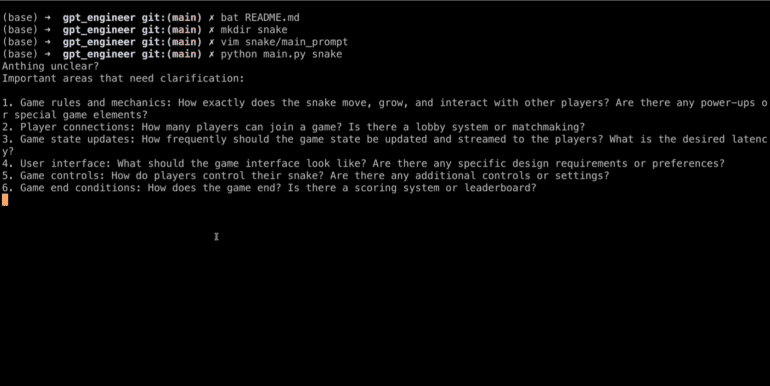TL;DR:
- GPT-Engineer simplifies software development by enabling developers to express requirements in natural language.
- It utilizes the GPT-4 model to automatically generate code from plain language descriptions.
- The framework boasts an active community of 89 contributors and a popular GitHub repository.
- Its modular architecture ensures flexibility and customization to suit various project requirements.
- GPT-Engineer accelerates software prototyping and development, making it a game-changer in the field.
Main AI News:
In the dynamic realm of software development, translating ideas into functional code can be a daunting task. The intricacies of coding languages often pose challenges, making it time-consuming and complex for developers to convey their thoughts and requirements effectively. Existing solutions, although offering templates and frameworks, still require manual coding, creating barriers for those unfamiliar with intricate syntax.
Enter GPT-Engineer, an open-source framework that is reshaping the landscape of software development. This innovative solution addresses the fundamental challenge of converting software requirements into actual code by harnessing the formidable capabilities of the GPT-4 model. With GPT-Engineer, developers can now express their software needs in natural language, eliminating the need for manual coding. By articulating their desired outcomes, developers can watch as the GPT engineer transforms plain language descriptions into executable code.
The impressive metrics behind GPT-Engineer speak volumes about its capabilities. A robust community of 89 contributors and a GitHub repository with over 47.9k stars and 7.8k forks demonstrate widespread support and adoption within the development community. The framework’s highly modular architecture ensures flexibility and customization, perfectly aligning with diverse project requirements and workflows. Moreover, its integration with GPT-4’s cutting-edge capabilities enables precise code generation from natural language prompts.
GPT-Engineer emerges as a game-changer in software development, streamlining the process by allowing developers to express their ideas in plain language. Leveraging GPT-4’s capabilities and backed by an active and supportive community, this framework significantly accelerates software prototyping and development. Its modular design and ability to remember project-specific details make it a potent and adaptable tool. As software development continues to evolve, GPT-Engineer stands at the forefront, simplifying the coding journey for developers and ushering in a new era of efficient and intuitive software creation.
Conclusion:
GPT-Engineer’s emergence signifies a significant shift in the software development market. Its ability to simplify coding processes and accelerate development through natural language descriptions positions it as a valuable tool for developers. With a robust community and adaptable architecture, it is set to influence and streamline software creation, offering greater efficiency and accessibility to a wider audience.

